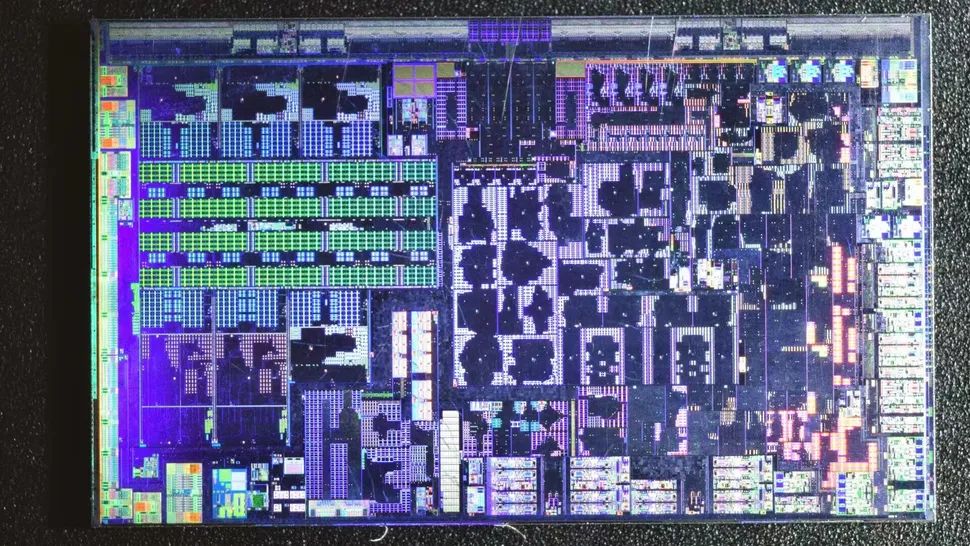
Big and little cores are coming to AMD chips.
AMD is preparing its first hybrid APUs, containing a mix of Zen 4 cores and smaller Zen 4c cores. Phoenix 2 will sit below the higher performing Phoenix and should appear in affordable laptops—though when that might be is an open question.
Twitter user @9550pro posted a Phoenix 2 die shot, and it reveals some interesting information. If you look at the picture above, you’ll see two full Zen 4 cores on the lower left, but at the top left is where it gets interesting. Those are Zen 4c cores, and they’re efficiency cores designed with low power consumption in mind. There’s a fourth Zen 4c core just to the right of the two performance cores. This makes it a 2+4 core design which is the kind of configuration you’d expect to find in a budget CPU.
9550pro states the Zen 4c cores support multithreading, with two concurrent threads. That means the die in question supports 12 threads in total.
Going back to the die shot, the large area in the center right is the GPU, with blocks for various SoC functionality including USB, memory and PCIe scattered around the periphery of the chip. The green area on the left side is the L3 cache.
Though very different in terms of architecture, like Intel’s Gracemont efficiency cores found in Alder Lake and Raptor Lake CPUs, Zen 4c cores will be well suited to less intensive tasks or conversely, heavily multithreaded tasks. AMD’s APUs are already known to be frugal on power, and given laptops spend a lot of time idling, low power efficiency cores should increase battery life, while still providing lots of threads on demand, even though such heavy tasks are less likely on a budget laptop.
(Image credit: Future)
Best CPU for gaming: The top chips from Intel and AMD.
Best gaming motherboard: The right boards.
Best graphics card: Your perfect pixel-pusher awaits.
Best SSD for gaming: Get into the game ahead of the rest.
With a hybrid CPU, those small cores are perfect for executing the endless little tasks Windows or tray residing programs do in the background. There’s no need to fire up a full fat core to do something that takes a millisecond to perform.
At the same time, if you do need lots of multi-threading grunt, those little CPU cores can take up the slack and perform very well—if there are enough of them. Zen 4c cores are sure to be closer in performance to full Zen 4 cores than an Intel Gracemont e-core is to a Golden Cove/Raptor Cove p-core.
With AMD following Intel, the future of x86 is hybrid, and it makes perfect sense. From a gaming point of view, there’s really no need for lots and lots of performance cores—yet. As long as consoles and laptops remain in the eight core range, developers won’t spend the resources to optimize code for the relatively few users with very high core count CPUs. Things like encoding or rendering aside, loads of performance cores don’t do a lot for gaming.
We’re a long way away from seeing Zen 5 for desktops, but I wouldn’t bet against AMD going the Intel route and introducing desktop parts with both types of cores. It’s also possible AMD will rebrand Phoenix 2 as a Ryzen 8000-series part.
AMD hasn’t always experienced smooth sailing when it comes to optimized core utilization, going all the way back to the launch of Threadripper. It’s going to need something along the lines of Intel’s Thread Director if it’s to go all in on hybrid CPUs and APUs.







